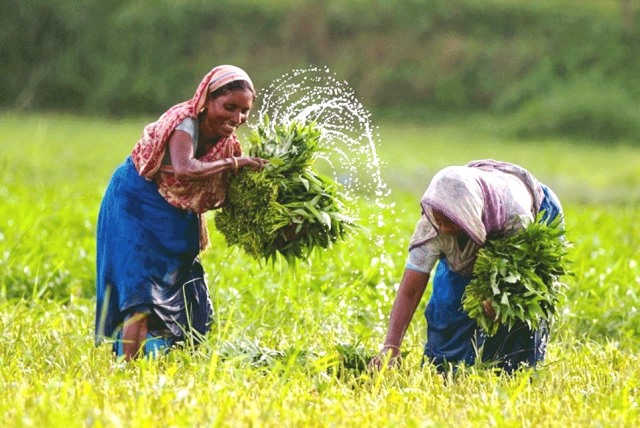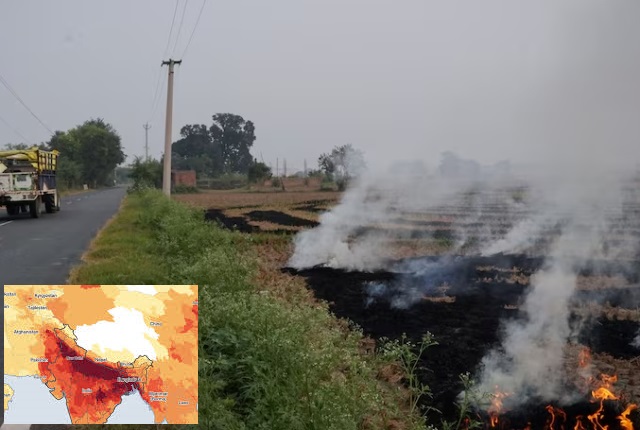
Food Security: Is Bangladesh Already There?
Over half a century ago, when Bangladesh liberated itself from the yoke of Pakistani misrule suffering one of the history’s worst genocides in the process, it inherited an infrastructure, both urban and rural, virtually in a state of ruins. A result of destruction wreaked by Yahya Khan’s army during the 1971 liberation war. A major and immediate challenge faced by independent Bangladesh was to end the legacy of hunger and poverty among a very large percentage of the then population close to 71 million. As it would happen, when Dhaka was trying to repair the economy with limited resources at its disposal, quite a few Western countries with the US heading the list were dismissive of Bangladesh as a basket case. Such unfriendly disposition towards a new born war ravaged country, stretched to the extreme to mobilise resources, caused heartache in Dhaka.
The challenge was to build institutions for rapid economic and social development. The US antagonism to Bengalis fighting for independence with support from India – this has never flagged since – has got everything to do with Washington making diplomatic overtures to China using Islamabad as the base. It will be recalled that in July 1971, the US National Security Adviser Henry Kissinger made a trip to Beijing wrapped in secrecy via Islamabad resulting in President Richard Nixon’s visit to China in the following year, ending a 25-year diplomatic deadlock. Whatever that was, the US antagonism towards a struggling Bangladesh did not go down well with many a nation.
A crisis that haunted Bangladesh for a very long time since Independence was yearly food deficit caused by low productivity of land and recurring natural disasters. As a result, the new born country became majorly dependent on food imports. No wonder the father of the nation Sheikh Mujibur Rahman gave a call in a historic address on February 20, 1972: “We must work hard with our farmers to revolutionise agriculture, not even an inch of our land should remain untilled and unused.”
The Mujibur call for optimal utilisation of land resource for bringing about a “revolution” in farming is since often invoked by Bangladesh leaders, including the present prime minister Sheikh Hasina. While the inevitability of progressive loss of crop land to accommodate “rural settlement, including human housing and urban industrial factories” remains, the country also has to contend with fragile ecosystems (haror, char, barind, coastal and hill) occupying 7,691,199 hectares or 53.1 per cent of its total area of 14,486,269 hectares. Such ecosystems, marked by a combination of unfavourable water regime and climate and salinity of water and soil militate against normal agricultural practices, posing many challenges to farm research organisations (some of these in Bangladesh are world class) and extension workers. But in spite of all the odds, the country’s transition from a state of recurrent shortages to making claims of “food surplus and security” is a story of unwavering focus on a sector (including animal husbandry and fish farming) providing livelihood to 40 per cent of labour force.
The fascinating journey of Bangladesh from least developed to a lower middle income country is based largely on transformation of its farm economy. Bangladesh Agricultural Research Council (BARC) has in a recent publication ‘A Development Trajectory of Bangladesh Agriculture: From Food Deficit to Surplus’ throws light in detail the steps the government has taken in partnership with research organisations, international development partners and all other stakeholders, including private industry and trade in bringing electrifying changes in food sector. Equally rich in data and analysis, the book tells in refreshing candour, unlike an official publication, the transformation story of farming in Bangladesh from subsistence to commercial production.
ALSO READ: How Dhaka Proved Kissinger Wrong, And More
Policy emphasis remains on diversification in farming but always keeping in sight the improvement in livelihood of farming communities as part of poverty reduction strategy. The book says an indicator of the progress in farming is the country becoming the world’s third largest producer of rice after China and India. While admitting that the rivers and streams in Bangladesh are in a “pitiful state,” the country continues to make commendable progress in freshwater fish production and exports.
With a 10 per cent share of global freshwater fish output, Bangladesh is only next to China (16 per cent) and India (14 per cent) in the world ranking of fish producing countries. In p theast ten years, Bangladesh has achieved 53 per cent rise in fish production and 20 per cent in fish exports. Among communities from this sub-continent living in Europe and the US, fishes of Bangladesh origin are much in demand.
Bangladesh Bureau of Statistics (BBS) informs despite unavoidable agricultural land shrinkage, rice production between 1970 and 2021 rose from 11.8m tonnes to 37.6m tonnes, the annual rate of growth being 4.4 per cent. Dietary preferences of Bangladeshis undergoing change, the staple rice use is being supplemented by growing consumption of wheat based food products. Unlike rice growing, cultivation of wheat does not go back many decades in Bangladesh or earlier East Pakistan. Growing at an annual rate of 20 per cent, wheat production in Bangladesh sprinted from 0.10m tonnes in 1970 to 1.10m tonnes in 2021. But since domestic requirements of the second staple far exceed local supply, the country routinely falls back on imports in a big way.
The US Department of Agriculture (USDA) has said in a report that both domestic use and import of wheat will continue to remain under pressure because of high international prices and lower domestic supply. Going by USDA assessment, Bangladesh might have at the most imported 5.5m tonnes of wheat during 2022-23 when domestic use was likely to have contracted by 10 per cent to 6.9m tonnes. Wheat imports in which public and private agencies participate suffered a 25 per cent setback year-on-year to around 4m tonnes during 2021-22, according to food ministry data. Imports in 2021-22 were at a six year low as high prices of wheat drove many consumers to use rice instead.
Introduction of wheat cultivation happened before Bangladesh was born in East Pakistan in the late 1960s, more as an experiment and with seeds imported from Mexico. But as the BARC publication says the wheat crop in terms of growth saw its best time over 1972-90 “when the area planted to wheat increased at a rate of 19.7 per cent per year from a small area of 0.13m hectare in 1972-73 to 0.59m hectare in 1989-90.” During this period, wheat productivity also improved from 0.71 tonne to 1.50 tonne a hectare, after scaling a high of 2.16 tonne a hectare in 1984-85.
In subsequent years, however, progress in wheat cultivation lost the steam for reasons, which remain “debatable.” But a couple of factors, according to the publication, are generally cited for deceleration in area expansion and stagnation in yield. First, the availability of irrigation water in wheat growing areas led many farmers to switch to growing boro rice. Second, yield stagnation has got much to do with farmers economising on the use of inputs following reduction/removal of subsidies. The early promise surrounding wheat growing has not been fulfilled despite local research institutions developing many high yield varieties of seeds of short duration and adopting well to Bangladesh environment.
Thanks to Bangabandhu’s two popular slogans ‘sabuj biplab’ (green revolution) and ‘krishak banchle desh banchbe’ (the country will survive if farmers survive), policymakers were encouraged to commit progressively bigger funds for the farm sector and introduce a series of bold reforms, including allowing the private sector in grain trade, commercialisation of agriculture, involving private sector and NGOs in seed production and distribution parallel to government agencies, promotion of export-oriented crops and fisheries, etcetera. BARC book says: “Allocation in agricultural ADP (annual development plan) increased massively by 5.6 times from Taka 7,901 million a year during the second half of the 1970s to an allocation of Taka 44,500 million during 2022-23.”
While growth has not been pursued in wheat growing, Bangladesh now figures among the top ten producers of vegetables, potato, onion and some fruits, mangoes and jackfruit in particular. The Bangladeshi population is growing at the rate of 1.1 per cent and now stands at around 173 million. Therefore, in order to avoid hunger, particularly among rural population, the imperativeness of continued food production growth at a healthy rate remains.
Whatever claims Dhaka may make of “food security and surplus,” the country, according to Bangladesh Poverty Watch Report 2022, has 35 million people living below poverty line. In poverty elimination, the country has, however, made commendable progress in that from 80 per cent of the population at Independence to 20 per cent now is struck by extreme poverty. Some local economists argue that a country, which in 2021-22 spent around $8.35 billion on food imports, from rice and wheat to edible oils and dairy products, will have to do a lot more work to achieve the goal of food security.
In the circumstances, they think Dhaka has been too early in claiming ‘food security.’ Moreover, Bangladesh is overly dependent on imports of maize and soybean to make poultry feed. Insufficient availability of gas from domestic sources has made Bangladesh hugely dependent on fertiliser imports, the cost of which during 2021-22 soared to $4.39 billion from $1.36 billion in the previous year. While this being so, Bangladesh continues to record success in promoting food processing industries leading to value addition to local farm produce and creation of jobs outside agricultural sector requiring a variety of skills.
Read More: http://13.232.95.176/
Dr Abdur Razzak, Bangladesh Minister of Agriculture, says: “This is a nice report on achievements of Bangladesh in food security. The work has deep insight into the subject.”
Author and journalist Nayan Chanda says: “Excellent essay. Original, informative and inspirational. Thanks for keeping the flame of good journalism burning.”
Senior journalist Mainak De observes: “Don’t think geographically (due to natural disasters, etcetera) the present Bangladesh was ever supposed to be a politically separate country but a region of a larger nation. Who knows what climate change will bring about in the future.”
The mainstay of Bangladesh economy is agriculture which was in a pathetic state at the time of its independence. Driven by focused investment, excellent work by research institutions, transfer of result results to farms through robust extension networks and a series of reforms, the country today finds a place among leading producers of rice, vegetables (including potato), a number of fruits and fish. Celebrations of the success are alright. But more has to be achieved since Bangladesh has a big population to feed. Moreover, the growing affluent and middle class will demand high quality food and dairy products.
Bangladesh achieved self sufficiency through strong commitment of present government particularly our Hon’ble Prime Minister Sheikh Hasina’s dynamic leadership which was envisaged planning i.e., Green Revolution made by our great leader Father of the Nation Bangabandhu Sheikh Mujibur Rahman. Agricultural Scientists, Extentionists and polymakers and the Farmers followed the directives of the present government.



